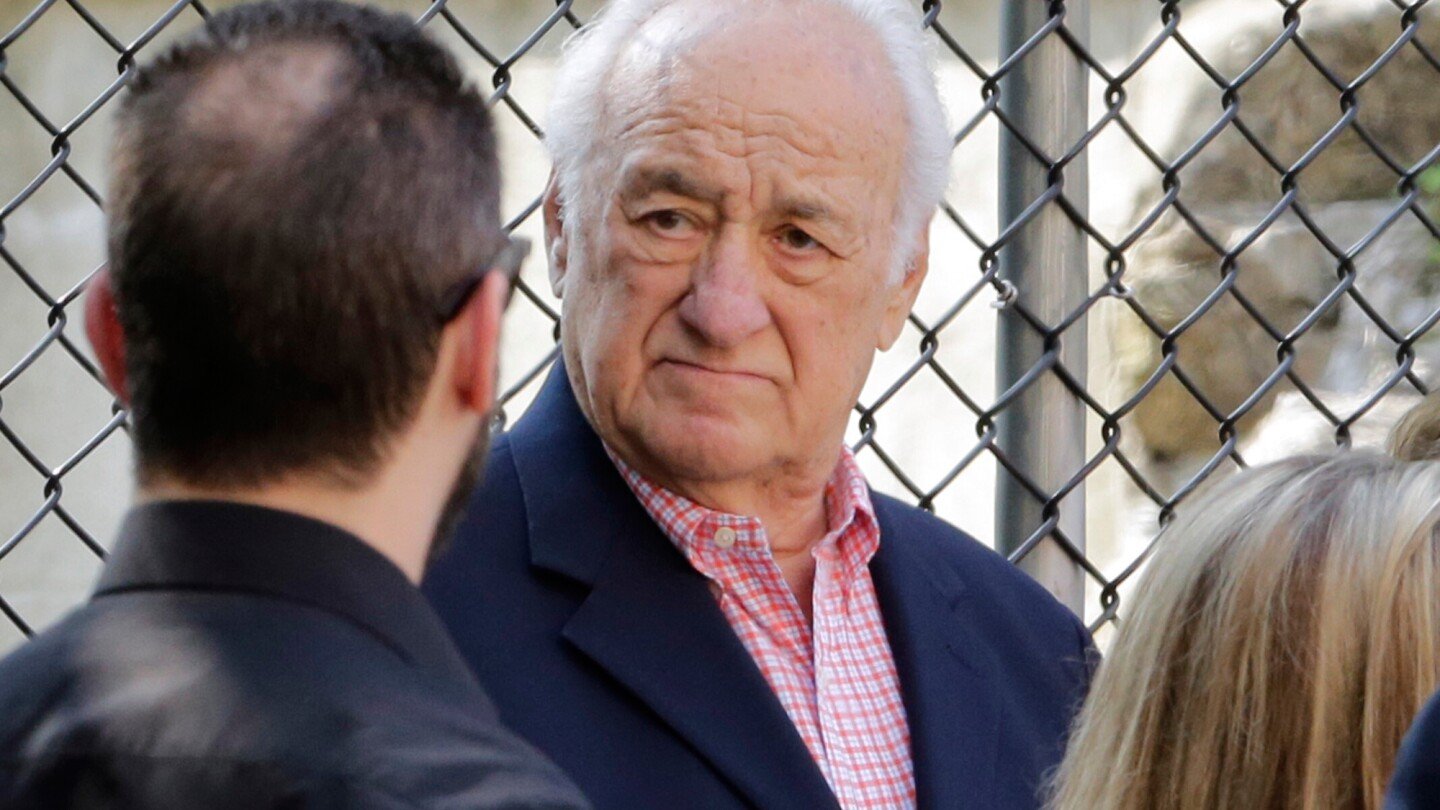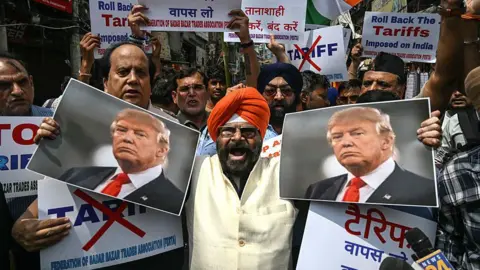Top Stories
Jerry Adler, ‘Sopranos’ actor and Broadway vet, dies at 96

NEW YORK (AP) — Jerry Adler, who spent decades behind-the-scenes of storied Broadway productions before pivoting to acting in his 60s, has died at 96.
Adler died Saturday, according to a brief family announcement confirmed by the Riverside Memorial Chapel in New York.
Among Adler’s acting credits are “The Sopranos,” on which he played Tony Soprano adviser Hesh Rabkin across all six seasons, and “The Good Wife,” where he played law partner Howard Lyman. But before Adler had ever stepped in front of a film or television camera, he had 53 Broadway productions to his name — all behind the scenes, serving as a stage manager, producer or director.
He hailed from an entertainment family with deep roots in Jewish and Yiddish theater, as he told the Jewish Ledger in 2014. His father, Philip Adler, was a general manager for the famed Group Theatre and Broadway productions, and his cousin Stella Adler was a legendary acting teacher.
“I’m a creature of nepotism,” Adler told TheaterMania in 2015. “I got my first job when I was at Syracuse University and my father, the general manager of Gentlemen Prefer Blondes, called me (because) there was an opening for an assistant stage manager. I skipped school.”
After a long theater career, which included the original production of “My Fair Lady” and working with the likes of Marlene Dietrich, Julie Andrews and Richard Burton, among many others, Adler left Broadway during its 1980s slump. He moved to California, where he worked on television productions like the soap opera “Santa Barbara.”
“I was really getting into the twilight of a mediocre career,” he told The New York Times in 1992.
But the retirement he was contemplating was staved off when Donna Isaacson, the casting director for “The Public Eye” and a longtime friend of one of Adler’s daughters, had a hunch about how to cast a hard-to-fill role, as The New York Times reported then. Adler had been on the other side of auditions, and, curious to experience how actors felt, agreed to try out. Director Howard Franklin, who auditioned dozens of actors for the role of a newspaper columnist in the Joe Pesci-starring film, had “chills” when Adler read for the part, the newspaper reported.
So began an acting career that had him working consistently in front of the camera for more than 30 years. An early role on the David Chase-written “Northern Exposure” paved the way for his time on a future Chase project, “The Sopranos.”
“When David was going to do the pilot for ‘The Sopranos’ he called and asked me if I would do a cameo of Hesh. It was just supposed to be a one-shot,” he told Forward in 2015. “But when they picked up the show they liked the character, and I would come on every fourth week.”
Films included Woody Allen’s “Manhattan Murder Mystery,” but Adler was perhaps best known for his television work. Those credits included stints on “Rescue Me,” “Mad About You,” “Transparent” and guest spots on shows ranging from “The West Wing” to “Broad City.”
He even returned to Broadway, this time onstage, in Elaine May’s “Taller Than a Dwarf” in 2000. In 2015, he appeared in Larry David’s writing and acting stage debut, “Fish in the Dark.”
“I do it because I really enjoy it. I think retirement is a road to nowhere,” Adler told Forward, on the subject of the play. “I wouldn’t know what to do if I were retired. I guess if nobody calls anymore, that’s when I’ll be retired. Meanwhile this is great.”
Adler published a memoir, “Too Funny for Words: Backstage Tales from Broadway, Television and the Movies,” last year. “I’m ready to go at a moment’s notice,” he told CT Insider then, when asked if he’d take more acting roles. In recent years, he and his wife, Joan Laxman, relocated from Connecticut back to his hometown of New York.
For Adler, who once thought he was “too goofy-looking” to act, seeing himself on screen was odd, at least initially. And in multiple interviews with various outlets, he expressed how strange it was to be recognized by the public after spending so many years working behind the scenes. There was at least one advantage to being preserved on film, though, as he told The New York Times back in 1992.
“I’m immortal,” he said.
Top Stories
Liverpool agrees to British-record deal for Alexander Isak, sources say

Liverpool have agreed to a British-record deal to sign striker Alexander Isak from Newcastle United, sources told ESPN.
The Premier League champions have had a £125M bid accepted to sign the Sweden international, who is expected to undergo a medical ahead of Monday’s transfer deadline.
It brings an end to one of the summer’s most-protracted transfer sagas, with Isak having spent more than a month agitating for a move away from Newcastle. The 25-year-old did not join the club on their preseason tour of the Far East and has not featured for Eddie Howe’s side this season.
He also released a sensational statement earlier this month in which he claimed promises had been “broken” by the Newcastle hierarchy and insisted a move this summer would be in the best interests of all parties.
Isak is now set to become the most expensive signing in Premier League history, surpassing Chelsea’s Moisés Caicedo who joined the London club for £115M from Brighton & Hove Albion in the summer of 2023. It marks the second time this summer that Liverpool have broken their transfer record, with Arne Slot’s side having committed spending an initial £100M (plus a potential £16M in add-ons) to sign Florian Wirtz from Bayer Leverkusen in June.
Top Stories
Donald Trump as the wildcard and other takeaways for India-China relationship

Vikas PandeyIndia editor and
Stephen McdonellChina correspondent
 Reuters
ReutersThe view from India
Just a few months ago, the armed forces of India and Pakistan were locked in a brief but deadly conflict.
The conflict indirectly involved a third nation – China. Pakistan’s armed forces heavily used China-made equipment, including fighter jets and radar systems.
A senior army officer in Delhi said Beijing also provided “live inputs” to Pakistan on Indian positions.
India didn’t take a public stand against China, but this left many asking if Delhi should continue on the path of normalising relations with Beijing.
Less than six months later, peace talks between the two Asian giants have been turbocharged by decisions taken thousands of miles away in Washington DC.
The Trump administration has imposed 50% tariffs on Indian imports, saying Delhi was being punished for its refusal to stop buying oil from Russia.
Delhi had two clear choices after this stunning onslaught from a trusted ally.
The first was to cave in and stop buying Russian oil. But it has refused to do so, largely because Russia is an “all-weather” ally and giving into pressure doesn’t suit Indian Prime Minister Narendra Modi’s strongman image.
The second was to stand firm and seek other opportunities and India appears to have to chosen this option for now.
It’s also pragmatic to look no further when your neighbour is the world’s second-largest economy and a global manufacturing powerhouse.
It was in this context, that Modi met Chinese President Xi Jinping in Tianjin over the weekend.
Statements from the two sides were not heavy on details, though they promised to work through their differences to benefit their collective population of 2.8 billion people.
The immediate takeaway from the meeting was the resumption of direct flights between the two countries and making the process of issuing visas simpler.
But beyond the promise of “the elephant and the dragon” coming together, the two countries still have major roadblocks to clear before they are able to engage meaningfully.
Their first challenge comes from their immediate history.
Modi has invested personally in the India-China relationship since coming to power in 2014, visiting the neighbouring country five times until 2018.
But the 2020 border clash put brakes on this momentum and it has taken seven long years for Modi to visit China again.
The key to making further progress will depend on how the two countries deal with their border issues.
Tens of thousands of troops from both countries are still deployed at their contested borders – though there are ongoing talks between their civilian and military leaders to ease the situation.
 AFP via Getty Images
AFP via Getty ImagesBoth Chinese and Indian readouts after the meeting this weekend talked about maintaining peace at the border and “not turning their differences into disputes”.
For India, there is the issue of a burgeoning trade deficit with China, amounting to more than $99bn (£73bn).
Both countries still have high tariffs and duties against each other in many sectors.
Beijing would want India to open its market of 1.4 billion people to Chinese products, but Delhi would be wary of doing that without addressing the deficit.
The outreach to China, which started with Modi meeting Xi in Kazan last year, may have been supercharged by Trump tariffs, but ground realities for India remain unchanged.
The Modi-Xi meeting is being seen as part of India’s policy of “strategic autonomy” but it will also cause more geopolitical challenges for Delhi.
India is due to host the Quad (which includes Japan, Australia and the US) summit later this year. The forum was largely seen as a challenge to China’s dominance in the Indo-Pacific region.
It’s not clear if Trump will attend, but if he does and says something against China, it will immediately test the renewed synergy between Delhi and Beijing.
Delhi is also part of several other multilateral forums that are perceived as anti-China and anti-Russia.
How Delhi plays its strategic autonomy in the next few months will very much influence the direction India-China ties take.
For now, it’s clear that India-US ties are at an all-time low. A Trump aide recently called the Russia-Ukraine conflict “Modi’s war”.
Delhi has also consistently denied that Trump played any role in the ceasefire between India and Pakistan in May – this has become a constant irritant for the US president.
Despite this, India has refrained from imposing retaliatory tariffs against the US and has left the door ajar for further negotiations. After all, the US is India’s biggest trading partner.
Will going closer to China help India’s negotiations with the US or will it have the opposite impact?
This is the question that will likely dominate geopolitical discussions in Delhi and beyond in the coming months.
 Hindustan Times via Getty Images
Hindustan Times via Getty ImagesThe view from China
When Xi Jinping met Narendra Modi he used what has become his favourite catchphrase for China-India relations: “The dragon and the elephant should come together”.
During “this period of transformation,” he added that it was vital for the world’s most populous nations to be friends and good neighbours.
In a case of spectacular timing, Prime Minister Modi’s visit has coincided with Donald Trump’s tariffs of up to 50% on India exports to the US.
This represents quite a hit on the country’s economy so New Delhi would be looking around for other business partners.
Look no further than right here, Xi may well say, as his administration attempts to rebuild from the wreckage of China-India relations following years of tension between the two.
And, if their official readouts are anything to go by, Modi’s attendance at the Tianjin Summit of the Shanghai Cooperation Organisation seems to have paid off.
His published comments to Xi were much more specific than the those coming the other way.
There is now a very good window for Beijing and New Delhi to repair their strained relationship.
China’s leader knows that Donald Trump’s tariff onslaught is pushing India away from the United States and that this great economic rival needs other partnerships.
Considerable obstacles remain.
They include China’s backing of India’s key rival Pakistan; interaction of all types has been in the doldrums; angry rhetoric from both governments (over many years) has created a climate of suspicion between the Asian heavyweights and their high-mountain border dispute has stirred nationalist sentiment on both sides of the frontier.
However, with the latter of these, this meeting would appear to confirm that pressure has already eased.
Last Thursday China’s Defence Ministry spokesman was talking up the success of discussions between the representatives of China and India aimed at stopping the clashes along their disputed border.
He spoke of “win-win cooperation” and celebrating the 75th anniversary of ties between the two nations.
Xi also knows that the symbolism of having Modi in China right now is considerable, that images of them shaking hands and standing side-by-by side – as the Trump tariffs on India kick in – can be a powerful propaganda tool which is made even more significant by the fact that this is a multilateral gathering.
The two will not only be joined by Vladimir Putin but by the other SCO governments like Turkey (a member of Nato), Saudi Arabia (a key US ally), Iran (a key enemy of the US) as well as Qatar, Egypt and Pakistan.
And all of this in the days before Beijing holds a massive display of military might with a parade through the heart of the capital.
Top Stories
At least 250 killed in 6.0-magnitude earthquake in Afghanistan

PESHAWAR, Pakistan — At least 250 people have been killed and over 500 have been injured in Afghanistan after a 6.0-magnitude earthquake hit the country, Taliban officials said Monday.
The earthquake struck 17 miles from the city of Jalalabad near the border with Pakistan around midnight local time (3:30 p.m. ET Sunday), according to the U.S. Geological Survey.
Because the earthquake hit a remote mountainous area, “it will take time to get the exact information about human losses and damage to the infrastructure,” said Sharafat Zaman, a spokesperson for the Afghan Public Health Ministry.
“We have launched a massive rescue operation and mobilized hundreds of people to help people in the affected areas,” Zaman said.
Since the initial quake, at least five aftershocks ranging from 4.5-magnitude to 5.2-magnitude have hit the area throughout Monday, according to the USGS.
Aftershocks can last for days and can sometimes be worse than the first quake.
Afghanistan is especially vulnerable to earthquakes as it sits on top of several fault lines where the Indian and Eurasian plates meet. The mountainous terrain of eastern Afghanistan is also prone to landslides, making it harder for emergency services to carry out rescues.
This quake was especially devastating as it hit at a shallow depth of 5 miles, making it far more destructive even at moderate magnitude.
In 2022, around 1,000 people were killed and thousands more were injured when a 5.9-magnitude earthquake hit eastern Afghanistan.
That, too, was a shallow quake.
The next year, three 6.3-magnitude quakes hit the western Afghanistan province of Herat in one week, killing around 1,500 people, according to the U.N.
Monday’s quake comes at a challenging time for Afghanistan, one of the world’s poorest countries, which is suffering from four consecutive years of drought and the influx of over 2.3 million Afghans who have returned from Iran and Pakistan this year.
“Below-average first and second season crop production and reduced livestock income limit their ability to stock food for the winter,” the Famine Early Warning Systems Network, which was established by the United States Agency for International Development, said in a report last week.
Mushtaq Yusufzai reported from Peshawar and Mithil Aggarwal from Hong Kong.
-
Tools & Platforms3 weeks ago
Building Trust in Military AI Starts with Opening the Black Box – War on the Rocks
-

 Business3 days ago
Business3 days agoThe Guardian view on Trump and the Fed: independence is no substitute for accountability | Editorial
-

 Ethics & Policy1 month ago
Ethics & Policy1 month agoSDAIA Supports Saudi Arabia’s Leadership in Shaping Global AI Ethics, Policy, and Research – وكالة الأنباء السعودية
-

 Events & Conferences3 months ago
Events & Conferences3 months agoJourney to 1000 models: Scaling Instagram’s recommendation system
-

 Jobs & Careers2 months ago
Jobs & Careers2 months agoMumbai-based Perplexity Alternative Has 60k+ Users Without Funding
-

 Education2 months ago
Education2 months agoVEX Robotics launches AI-powered classroom robotics system
-

 Funding & Business2 months ago
Funding & Business2 months agoKayak and Expedia race to build AI travel agents that turn social posts into itineraries
-

 Podcasts & Talks2 months ago
Podcasts & Talks2 months agoHappy 4th of July! 🎆 Made with Veo 3 in Gemini
-

 Podcasts & Talks2 months ago
Podcasts & Talks2 months agoOpenAI 🤝 @teamganassi
-

 Mergers & Acquisitions2 months ago
Mergers & Acquisitions2 months agoDonald Trump suggests US government review subsidies to Elon Musk’s companies






















